#Sound waves
Explore tagged Tumblr posts
Text
Curtin University researchers have developed a new technique to make glass water-repellent, a feature that could improve safety in vehicles, reduce cleaning costs for buildings and enhance filtration systems. The research, published in Advanced Functional Materials, shows how an innovative and non-toxic process using ultrasonic sound waves can alter the surface of glass, making it either hydrophobic (water resistant) or electrically charged.
Continue Reading.
251 notes
·
View notes
Text

soundwave
21 notes
·
View notes
Text

"The movie below shows the interference pattern generated in a ripple tank (in 2 dimensions) where water waves are generated by two small vibrating sources. The location of the sources is marked by the purple circles." https://salfordacoustics.co.uk/sound-waves/superposition/interference-from-two-point-sources
23 notes
·
View notes
Text
The Transformative Power of Sound

Sound is more than just an auditory experience; it is a powerful force that can heal, inspire, and transform our minds, bodies, and souls. From ancient civilizations that used chants and drums in their rituals to modern scientists studying the therapeutic effects of sound waves, the significance of sound in shaping human experience is undeniable. Whether through music, nature sounds, or carefully crafted frequencies, sound has the capacity to alter consciousness, enhance well-being, and connect us to something greater than ourselves.
The Science of Sound and Its Impact on the Brain
Sound is a form of energy that travels through vibrations, affecting everything it touches--including our brains. Neuroscientists have discovered that different frequencies and types of sound can activate various neural pathways, influencing mood, cognition, and even physical health. Studies show that listening to music can trigger the release of dopamine, the brain's "feel-good" neurotransmitter, leading to improved mood and reduced stress.
Additionally, brainwave entrainment, a phenomenon where rhythmic auditory stimuli synchronize with brainwave activity, has been shown to induce states of deep relaxation, heightened focus, and even altered consciousness. Binaural beats, a form of auditory illusion created by playing two slightly different frequencies in each ear, can encourage the brain to enter specific states, such as alpha waves for relaxation or theta waves for meditation and creativity.
Sound Healing and Its Ancient Roots
Long before science began studying sound's effects, ancient civilizations recognized its power. The use of sound in healing rituals can be traced back to Egyptian, Greek, and Indian cultures. In Ayurveda, the ancient Indian system of medicine, mantras and specific sound vibrations are used to balance the body's energy centers, or chakras. Similarly, Tibetan monks have used singing bowls and overtone chanting for centuries to promote meditation and spiritual enlightenment.
One of the most well-documented sound healing techniques is the use of Solfeggio frequencies--specific tones believed to possess healing properties. For example, the 528 Hz frequency, often called the "Love Frequency," is associated with DNA repair and positive transformation. These frequencies have been incorporated into modern sound therapy practices to promote emotional healing and personal growth.
Music as a Tool for Transformation
Music is perhaps the most universal and accessible form of sound therapy. It has the ability to evoke emotions, stimulate memories, and create profound shifts in consciousness. Certain types of music, such as classical compositions or ambient soundscapes, can induce relaxation and enhance concentration, while upbeat rhythms can energize and motivate.
Music therapy has been increasingly used in clinical settings to aid patients with neurological disorders, anxiety, and depression. For instance, Alzheimer's patients often experience memory recall when exposed to familiar music from their past, demonstrating music's deep connection to the brain's memory centers. Additionally, rhythm-based therapies, such as drumming circles, have been used to help individuals process trauma and express emotions non-verbally.
Nature Sounds and Their Restorative Effects
Beyond human-made music, the sounds of nature have a profound impact on our well-being. Studies have shown that listening to natural soundscapes--such as ocean waves, rustling leaves, or birdsong--can significantly reduce stress and promote a sense of tranquility. This is because nature sounds have an inherent ability to mask jarring noises, lower cortisol levels, and activate the parasympathetic nervous system, which is responsible for relaxation and recovery.
Shinrin-yoku, or "forest bathing," a Japanese practice of immersing oneself in the sounds and sights of the forest, has been found to have numerous health benefits, including reduced blood pressure and enhanced mood. This underscores the idea that sound, even in its most organic form, plays a crucial role in our mental and physical health.
The Role of Sound in Meditation and Spiritual Practices
For centuries, various spiritual traditions have used sound to deepen meditation and enhance spiritual experiences. Chanting, toning, and singing bowls are commonly employed to help individuals reach altered states of consciousness. The repetition of sacred sounds, such as "Om" in Hindu and Buddhist traditions, is believed to attune the body to the vibrations of the universe, fostering a sense of unity and inner peace.
In modern meditation practices, guided sound meditations and sound baths have gained popularity. Sound baths, which involve being enveloped in soothing sounds from gongs, crystal bowls, or tuning forks, can facilitate deep relaxation, emotional release, and even profound spiritual experiences. Many people report feeling a sense of weightlessness or transcendence after such sessions, further proving sound's ability to alter perception and elevate consciousness.
Using Sound Intentionally in Everyday Life
Given sound's transformative potential, incorporating intentional sound practices into daily life can be profoundly beneficial. Here are a few ways to harness the power of sound:
Create a Personal Sound Sanctuary: Dedicate a space for relaxation with soothing music, singing bowls, or ambient soundscapes.
Use Binaural Beats or Isochronic Tones: Experiment with brainwave entrainment for focus, relaxation, or meditation.
Engage in Vocal Toning or Chanting: Using your own voice to produce vibrations can be a powerful tool for self-healing.
Spend Time in Nature: Listen to the sounds of water, birds, or wind to restore balance and calm the mind.
Play or Listen to Music Mindfully: Instead of passive listening, actively engage with music, paying attention to how it affects your emotions and body.
Conclusion
The power of sound is undeniable--it shapes our emotions, influences our physiology, and connects us to deeper aspects of ourselves and the world around us. Whether through music, nature sounds, ancient healing practices, or modern therapeutic techniques, sound offers a gateway to transformation. By consciously incorporating sound into our lives, we can harness its ability to heal, inspire, and elevate our consciousness. In a world filled with noise, learning to listen intentionally can be one of the most profound tools for personal and collective transformation.
#sound healing#sound waves#music therapy#binaural beats#nature sounds#mantras#solfeggio frequency#sound therapy#singing bowls
14 notes
·
View notes
Note
Let’s see you do a moodboard for Soundwave.

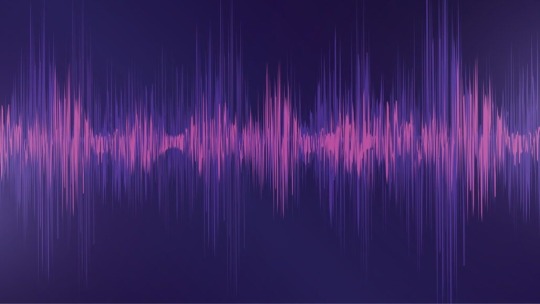

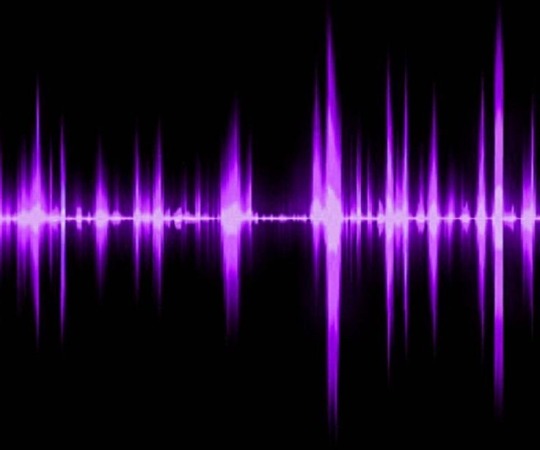






Soundwave (Transformers Cybertron)
#livi’s moodboards#aesthetic#moodboards#moodboard#blue#sound waves#music#record player#purple#silver#transformers#transformers Cybertron#toys#Soundwave#Cybertron Soundwave#Decepticons#Decepticon
38 notes
·
View notes
Text

“Soundwave superior”
#sound waves#soundwave#art#drawings#artists on tumblr#transformers optimus#transformers bayverse#transformers g1#wavewave#am 1 ty’s art
81 notes
·
View notes
Text

IN THROES OF INCREASING WONDER. (inprnt)
click for better resolution, please do not repost (rbs are v good!), more details in the image description (written by the lovely martyrbat) 🎻🩸
#my art#digital art#sound waves#amc iwtv#interview with the vampire#lestat de lioncourt#lestat#louis de pointe du lac#louis#loustat#interview with the vampire soundtrack#in throes of increasing wonder#Daniel Hart#red#red art
58 notes
·
View notes
Text

🎧✨an editorial on the way we subconsciously feel the need to play music + feed Spotify money ALL the time (idc I need my jams lmao)
•
#editorial#editorial art#art student#stardustedtea#art#artist#digital art#digitalart#young artist#artwork#digitalpainting#procreate#student work#student artwork#music#sound waves#soundwave#music art#art of music#digital illustration#illustration#editorial illustration#class assignment
5 notes
·
View notes
Text
Languages are a key factor in human societies. They connect people, serve as a vehicle to pass on knowledge and ideas, but they also distinguish between different groups of people. Languages can therefore tell us a lot about the societies that use them. As languages are constantly changing, it is important to know the factors that play a role in this. Scientists can then reconstruct past processes on the basis of languages. In a study published today (Dec. 5) in the online journal PNAS Nexus, Kiel linguist Dr. Søren Wichmann, together with colleagues from China, demonstrates that average ambient temperatures influence the loudness of certain speech sounds. "Generally speaking, languages in warmer regions are louder than those in colder regions," says Dr. Wichmann. The basic idea behind the study is that we are surrounded by air when we speak and listen. Spoken words are transmitted through the air as sound waves. The physical properties of air therefore influence how easy it is to produce and hear speech. "On the one hand, the dryness of cold air poses a challenge to the production of voiced sounds, which require vibration of the vocal cords. On the other hand, warm air tends to limit unvoiced sounds by absorbing their high-frequency energy," explains Dr. Wichmann. These factors could favor a higher volume of certain speech sounds in warmer climates, known as sonority in scientific terms.
Continue Reading.
117 notes
·
View notes
Text
Peacock Planet Chapter 1 Page 1

The rapidity of your pulse increases the sound in your ears. The sound is static. The static pulses. With each pulse, the hint of voices echoing under the din. As the pulse subsides, in that pause between, where the heart breathes between beats... {Previous Page} {Read from the Beginning} {Next Page}
source: (1)
8 notes
·
View notes
Text
Soundwave Breathing
Soundwave Breathing was created by Haruto Yokicho and is derived from Sound Breathing. It requires speed, stamina, and strength. It has 10 forms and it can be used to either blast off a demon's head or make them deaf.
First Form: Echo Strike:
The user swings their sword, creating soundwaves to blast off demon's heads.
Second Form: Sonic Dash:
The user focuses on their breathing, making sure they have enough air in their lungs. They dash across the field, slashing the heads of multiple demons in a swift movement, leaving after images.
Third Form: Resonance Armor:
This is a defense move, making the user more aware of their surroundings, knowing where demons would come from.
Fourth Form: Harmony Burst:
This moves heals minor injuries and helps the user gain more energy.
Fifth Form: Dissonance Blade:
The user uses their blade to blast sounds towards the demon. Using any pitch to weaken the demon's ears.
Sixth Form: Cacophony Step:
A defensive technique that allows the user to phase in and out of reality briefly. They become intangible, avoiding attacks by vibrating at a frequency different from their surroundings.
Seventh Form: Resounding Roar:
Serving as a counterattack, the user runs around the demon in seconds, slashing them. The foe doesn't feel it until seconds later from how fast it was.
Eighth Form: Soundwave Surge:
If the demon had any defense mechanisms, the user would throw their sword to pin it and break it.
Ninth Form: Echolocation
The user heightens their senses by emitting sound pulses. They can detect hidden enemies, sense their movements, and anticipate attacks even in complete darkness.
Tenth Form: Silent Crescendo:
The ultimate form, this form can only be used once you master all forms. The user focuses on only sound and the demon. Everything turns silent and all could be heard is the user hitching their breath. The user disappears in a flash. The demon is now in a white world, the user is faster than sound now and they could cut of the head of an Uppermoon. This could be used to unlock the user's Demon Slayer Mark.
#:3#new post#demon slayer#kny oc#kny#kny ocs#Haruto Yokicho#breathing styles#do not steal#soundwave#sounds#sound waves#Soundwave Breathing#deaf
12 notes
·
View notes
Text


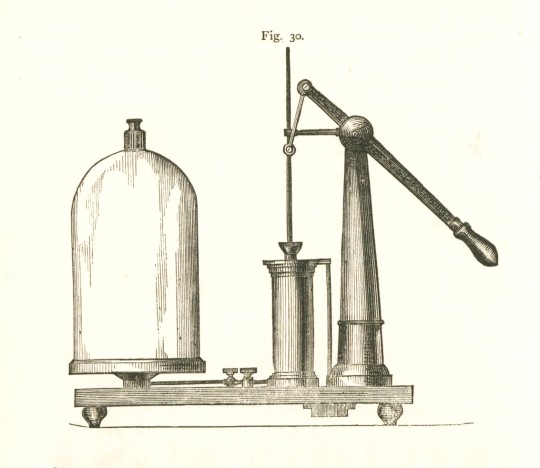
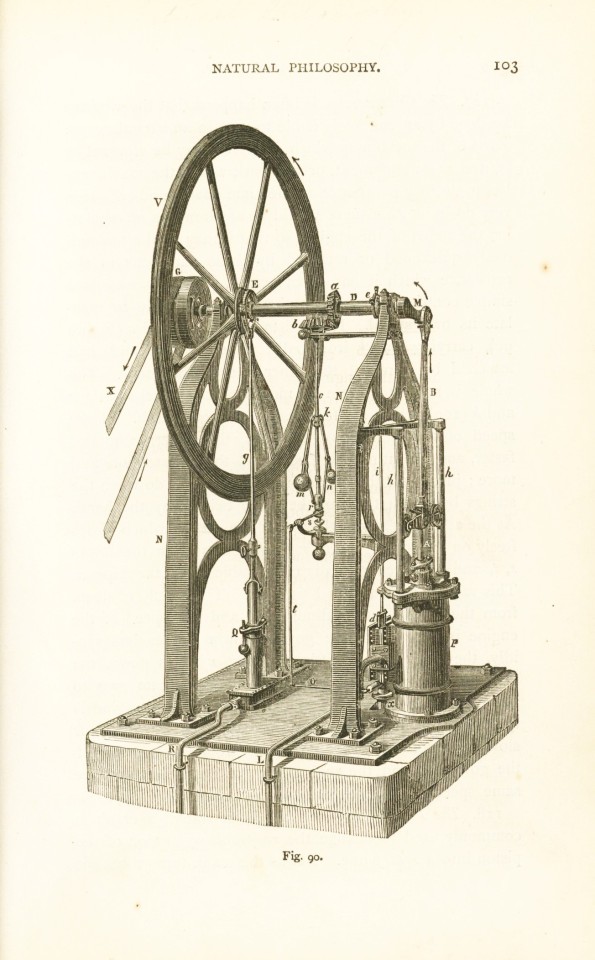

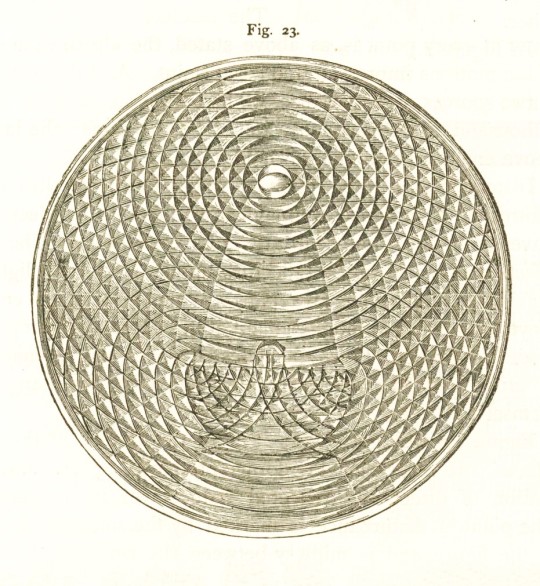
Science Saturday
Here are some wood engravings and a chromolithograph from a new addition to our Historical Curriculum Collection, two titles bound in one volume: A Handbook of Natural Philosophy and Elements of Sound, Light, and Heat, both by American educators William James Rolfe (1827-1910) and Joseph Anthony Gillet (1837-1908), published in 1868 as part of the 6-volume Cambridge Course of Physics series by Boston educational publisher Woolworth, Ainsworth, & Co. with the second title also published in New York by A. S. Barnes & Co.
The chromolithograph of the spectrograph was printed by the Boston German-American lithographer Augustus Meisel (1824-1885). The wood engravings (probably metal plates produced from the original blocks) depict, from the top, a hydraulic press, a vacuum jar, a stationary steam engine, and a steam locomotive. The last image depicts the interaction of waves:
It represents the forms produced by the intersection of direct and reflected water-waves in a vessel. The point of disturbance is marked by the smallest circle in the figure, and is midway between the centre and the circumference. . . . In like manner a great variety of sound-waves may exist together in the air. . . . In this way thousands of waves may be transmitted through the air at the same time without losing their individual character. The same case holds good here as in the case of water-waves; namely, that every particle of air is affected by a motion which is the algebraic sum of all the single motions imparted to it.
View more Science Saturday posts.
View more posts with chromolithographs.
View more posts with wood engravings!
#Science Saturday#science#mechanics#sound waves#William James Rolfe#Joseph Anthony Gillet#A Handbook of Natural Philosophy#Elements of Sound Light and Heat#Woolworth Ainsworth &Co.#A. S. Barnes & Co.#Augustus Meisel#chromolithographs#yay chromoliths!#wood engravings#Historical Curriculum Collection
45 notes
·
View notes
Text
Archaeoacoustics: The Archaeology of Sound

Archaeoacoustics, a burgeoning field within archaeology, combines the study of ancient sites and artifacts with the science of sound. By examining how sound was used and experienced in historical contexts, researchers can gain unique insights into the lives, cultures, and environments of ancient peoples. This post will delve into the principles of archaeoacoustics, its methodologies, significant findings, and the implications of these discoveries for our understanding of history.
What is Archaeoacoustics?
Archaeoacoustics is the interdisciplinary study that merges archaeology, acoustics, and sometimes anthropology, to understand the role of sound in past human activities. This field investigates how ancient peoples produced, manipulated, and perceived sound, whether in rituals, communication, or daily life. By reconstructing these soundscapes, archaeoacoustics offers a sensory dimension to historical inquiry, enriching our interpretation of archaeological sites and artifacts.
Methodologies in Archaeoacoustics
Acoustic Measurements and Simulations
One of the primary methods in archaeoacoustics involves acoustic measurements and simulations. Researchers use modern technology to analyze the acoustics of ancient structures such as theaters, temples, and caves. Tools like sound level meters, directional microphones, and computer simulations help in understanding how sound behaves in these environments. By measuring reverberation times, frequency responses, and sound distribution, archaeologists can infer the acoustic properties and possible uses of these spaces.
Sound Mapping
Sound mapping is another critical technique, where the distribution of sound within a particular area is documented. This involves creating detailed maps that illustrate how sound travels and is experienced at different locations within a site. These maps can reveal areas of optimal acoustics that may have been used for specific activities, such as speech, music, or ritual practices.
Experimental Archaeology
Experimental archaeology also plays a role in archaeoacoustics. By recreating ancient instruments or sound-producing devices, researchers can explore how these tools might have been used and what kind of sounds they produced. This hands-on approach provides tangible insights into the auditory experiences of ancient peoples.
Significant Discoveries in Archaeoacoustics
The Acoustics of Stonehenge
One of the most fascinating studies in archaeoacoustics involves Stonehenge, the prehistoric monument in England. Researchers have used acoustic modeling to understand how sound would have behaved within this stone circle. Findings suggest that the stones could have amplified speech and musical sounds, creating an immersive auditory experience. This has led to speculation that Stonehenge may have been used for rituals or gatherings where sound played a crucial role.
The Hypogeum of Hal-Saflieni
The Hypogeum of Hal-Saflieni in Malta, an underground temple complex, is another site of interest. Acoustic studies have shown that certain chambers within the Hypogeum have unique resonance frequencies that enhance the human voice. This has led researchers to believe that the temple may have been designed with acoustic properties in mind, possibly for chanting or other vocal rituals.
Chavin de Huantar
At the ancient site of Chavin de Huantar in Peru, archaeoacoustics has revealed that the temple complex was built with sophisticated sound manipulation in mind. Researchers discovered that the architecture of the site, including its network of tunnels and chambers, could have been used to create disorienting and awe-inspiring auditory effects during religious ceremonies. The use of conch shell trumpets and other sound devices would have added to these effects, enhancing the spiritual and psychological impact on participants.
The Maya Pyramid of Kukulkan
At the Maya ceremonial center of Chichen Itza in Mexico, an incredible acoustic phenomenon can be heard at the Pyramid of Kukulkan. If you clap your hands directly in front of the pyramid's main staircase, it echoes back an almost mechanical bird-like chirping sound. Handclaps from different positions along the base of the staircase likewise trigger the echo, but with different musical tones spanning half an octave. Recordings of the hand-clap echoes match the chirp of the nearly extinct Quetzal, the sacred bird associated with both the name of the pyramid and its plumed serpent deity Kukulkan.
The Maya Ruins of Palenque
Archaeologists discovered that the temples and public squares in Palenque, Mexico could clearly project the sounds of a human speaker and musical instruments of the time across at least a hundred meters, or about the length of a football field. The investigation identified rooms that could have been used by musicians, speakers or priests to amplify the frequency, quality and volume of sound, allowing the music or the message to travel further and reach more people. The findings strongly suggest the design and structures at Palenque involved a great deal of knowledge about acoustics and the behavior of sound.
Implications and Insights
Understanding Rituals and Ceremonies
Archaeoacoustics provides valuable insights into the rituals and ceremonies of ancient cultures. By reconstructing the soundscapes of these events, researchers can better understand the sensory experiences of participants and the role of sound in these practices. This can shed light on the spiritual and cultural significance of sound in ancient societies.
Reinterpreting Archaeological Sites
The study of sound can lead to new interpretations of archaeological sites. Structures that were previously thought to serve purely functional purposes may be re-evaluated in light of their acoustic properties. For example, a room that was assumed to be a storage area might be reconsidered as a space for ritual chanting if it has unique acoustic characteristics.
Enhancing Public Engagement
Archaeoacoustics also has the potential to enhance public engagement with archaeology. By recreating the sounds of the past, museums and heritage sites can offer immersive experiences that bring history to life. This sensory approach can make historical sites more accessible and engaging for visitors, fostering a deeper connection with the past.
Conclusion
Archaeoacoustics offers a fascinating and innovative approach to the study of ancient cultures. By exploring the acoustic properties of archaeological sites and artifacts, researchers can uncover new dimensions of historical experience and gain deeper insights into the lives of ancient peoples. Despite its challenges, the field holds great promise for enhancing our understanding of the past and engaging the public with history in new and exciting ways. As technology advances and interdisciplinary collaboration continues, the future of archaeoacoustics looks both promising and intriguing, inviting us to listen to the echoes of history in ever more profound ways.
#consciousness#archaeology#acoustics#ancient cultures#sound waves#anthropology#music#ritual#sacred places
43 notes
·
View notes
Text
Whereas sound alters in pitch as the wavelength changes, light alters in color.
"The Stars in their Courses" - Isaac Asimov
#book quote#the stars in their courses#isaac asimov#nonfiction#essay#playing the game#sound#light#sound waves#pitch#wavelength#color change
6 notes
·
View notes
